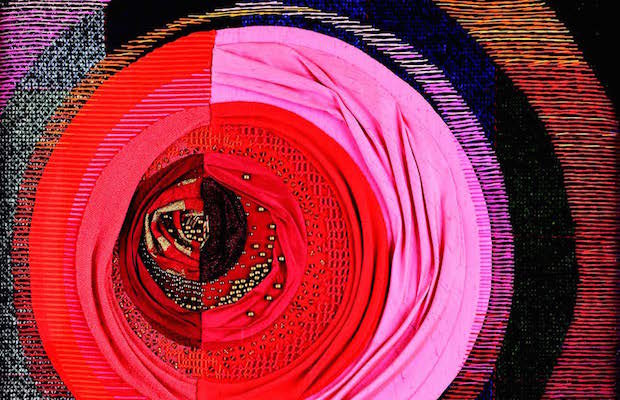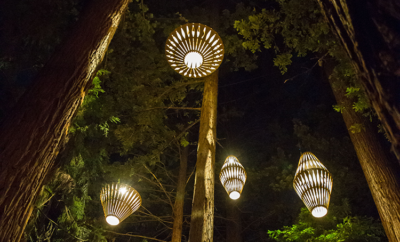 LYON & TURNBULL
LYON & TURNBULL
Design
Delving Deeper
UNRAVELING THE REASONS FOR THE SNAPPY HAMMER PRICE ON A CONSTANCE HOWARD TEXTILE PANEL
LOT 180 Lyon & Turnbull Textiles as Art: From the Collection of Paul Reeves, February 23, 2017: Harvest Moon, embroidered appliqué panel by Constance Howard, c. 1960. Estimated at £800–£1,200 (≈$1,025–$1,500), the piece sold for £3,625 (≈$4,600). Some reasons for the high price:

Lyon & Turnbull
A STITCH IN TIME
Constance Howard (1910–2000) began her artistic training at the tender age of ten, when she was enrolled in evening art classes. Years later, after being denied a grant to the Royal College of Art on the technicality of being a woman, she trained in embroidery at the Northampton School of Art (and subsequently, indeed, at the Royal College). In 1947 she became a part-time tutor in textiles at Goldsmiths, University of London, and the following year established Goldsmith’s department of embroidery. She went on to serve as principal lecturer in charge of textiles and fashion. Through decades of teaching and writing and of encouraging study and experimentation, she had an immense impact on the perception of embroidery and its importance in the United Kingdom and abroad.
EMBROIDERER & SCHOLAR
Upon retiring from Goldsmiths in 1975, Howard toured internationally, lecturing on embroidery and textiles. She also committed herself to documenting the modern history of her craft in a profusion of publications, from the quaintly titled Constance Howard Book of Stitches to the multi-volume Twentieth-Century Embroidery in Great Britain, and arguing to elevate embroidery from domestic craft to serious art. In 1980 Audrey Walker—then head of the department of textiles at Goldsmiths— established the Textile Study Collection at the school, to which Howard later added her private collection of important textiles, personal works, teaching notes, and various other items. This dense resource, diverse in geography and era, is now the Goldsmiths Textile Collection in the Constance Howard Gallery at the University of London.
AUTUMNAL COLOR, ETERNAL
“The decoration of household articles has been in and out of fashion but the wall hanging or panel as a vehicle for embroidery has continued up to the present as a favourite article for embellishment,” Howard wrote in Twentieth-Century Embroidery. As if reflecting this thought in practice, hangings are Howard’s most renowned works. The best known is The Country Wife, a large piece completed in collaboration with her students and other embroiderers for the Festival of Britain in 1951 and now housed in the National Needlework Archive in Newbury, Berkshire, England. The titular protagonist is difficult to identify amid the multitude of figures stationed at different perspectival depths and betraying no obvious hierarchy in favor of the whole. Harvest Moon plays on a similarly pastoral theme and sense of dimension. A vibrant gradient of autumnal tones radiates in this concentric composition, creating an organic and celestial piece. Unlike much of Howard’s oeuvre, it is not figural, yet it maintains a folk aesthetic while quietly approaching abstract modernism through shape and color. Howard experimented with incorporating mixed materials—from bottle caps to glass shards—for unexpected texture in her embroideries. Here, pronounced stitching is juxtaposed with elegantly laid silk and concentrated beading to conjure a play of traditional and modern, rustic and genteel.
CRAFT TO ART TO AUCTION
Perhaps because her objective was to disseminate knowledge rather than accumulate wealth, Howard’s embroideries do not often appear on the market. Harvest Moon was among an impressive group of textiles cast upon Lyon & Turnbull by the discerning lifelong collector Paul Reeves. Reeves—who in the 1960s sold fashions to Jimi Hendrix, Led Zeppelin, and the Beatles—amassed for his own pleasure textiles by such design stars as William Morris, Frank Lloyd Wright, and Salvador Dalí. Representing the singular taste of one collector, the Lyon & Turnbull sale posed risks in the often unpredictable design market, especially for the work of Howard, which had little precedent at auction. “We knew the Howard piece was a rarity and the estimate certainly indicated that,” explains Lyon & Turnbull director John Mackie. Overall, Mackie priced the sale “temptingly,” a strategy that paid off: “I think collectors were buying into Paul’s taste, and there was a perfect storm of several avid collectors vying for the best pieces and pushing up prices generally as a result.” Howard’s Harvest Moon was one of the highest sellers and found a home with a private international collector.












